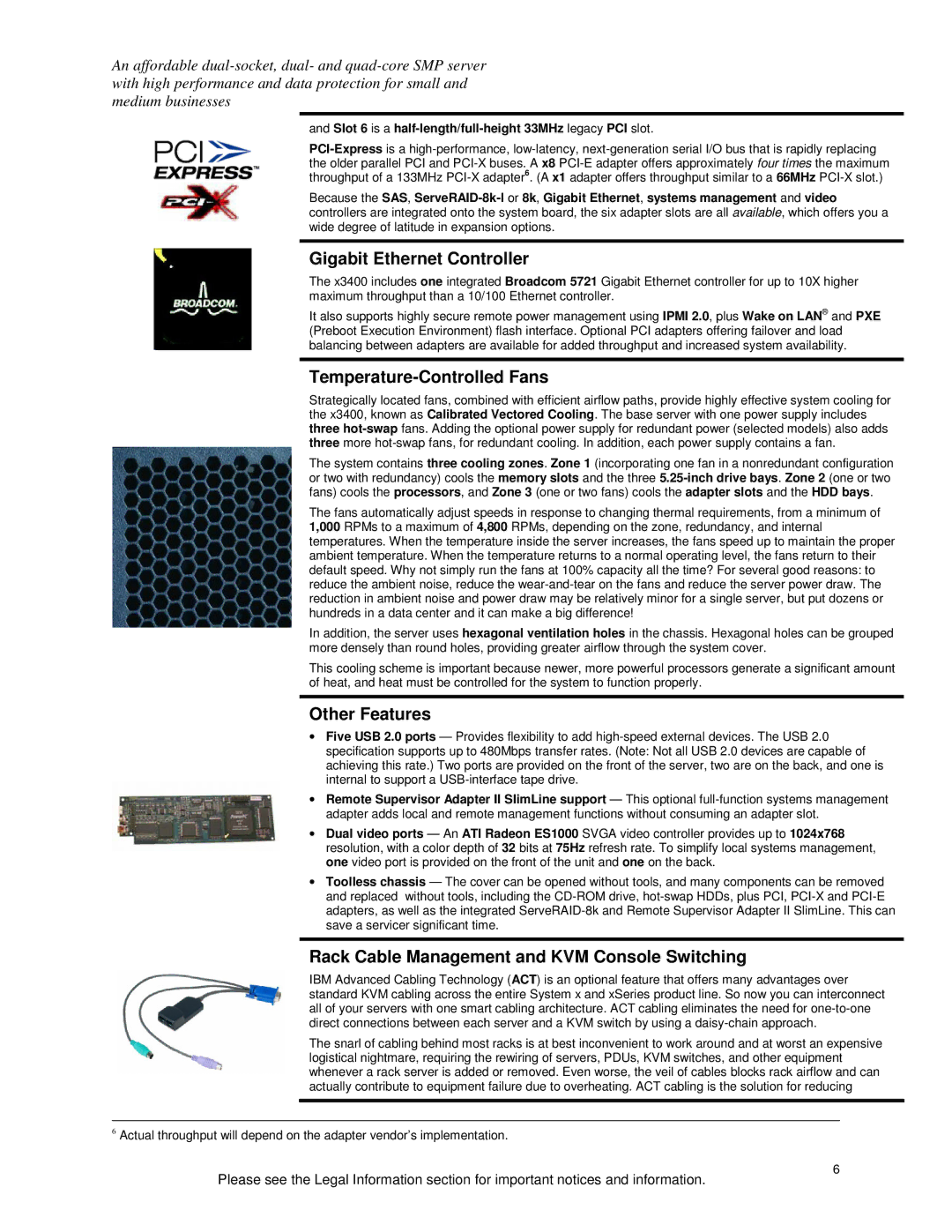x3400 specifications
The IBM x3400 is a versatile and robust server that is part of IBM's System x family, designed specifically for small to medium-sized businesses (SMBs) and enterprise branch offices. Known for its reliability and performance, the x3400 series is an excellent choice for organizations looking to improve their IT infrastructure.One of the primary features of the IBM x3400 is its dual-socket architecture, which allows for the installation of two processors. This server supports Intel Xeon processors, offering outstanding computing power and excellent scalability. The x3400 is designed to handle demanding workloads, making it suitable for virtualization, database management, and medium-sized enterprise applications. It supports up to 128 GB of DDR3 memory, ensuring that applications run smoothly even under heavy loads.
In terms of storage options, the IBM x3400 boasts impressive flexibility. It can accommodate a variety of hard drive configurations, featuring support for up to eight 3.5-inch hot-swap SAS, SATA, or SSD drives. This flexibility allows businesses to tailor their storage solutions to meet specific needs, whether that be speed, reliability, or capacity. Additionally, the x3400 includes the Integrated RAID capabilities that offer improved data protection and performance.
The server also emphasizes enhanced manageability features. With IBM's Systems Director, users can monitor system health, track asset information, and automate specific tasks to reduce administrative overhead. This built-in management software simplifies server administration and helps IT staff to optimize system performance.
Networking is another key aspect of the IBM x3400. The server comes with multiple integrated Gigabit Ethernet ports, ensuring that it can handle high-traffic loads efficiently. Furthermore, the x3400 supports optional IBM Virtual Fabric technology, which enhances network performance by allowing the consolidation of multiple network connections into a single interface.
Security is a critical factor in today’s IT environment, and the x3400 is designed to address this concern. It includes features such as the IBM Trusted Platform Assurance, which offers hardware-based security, ensuring that the server can protect sensitive data from potential threats.
In conclusion, the IBM x3400 stands out as a reliable, high-performance server solution tailored for growing businesses. Its blend of processing power, storage flexibility, integrated management tools, networking options, and security features makes it an ideal choice for organizations aiming to enhance their IT capabilities while ensuring ease of use and maintenance.

